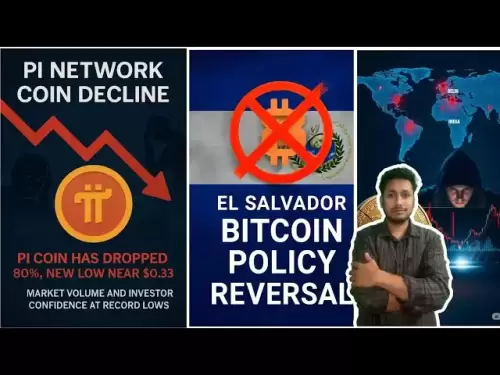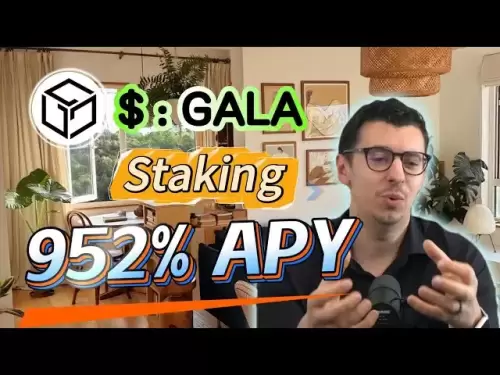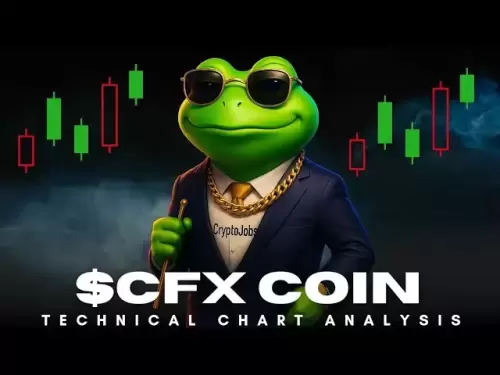-
 Bitcoin
Bitcoin $119700
0.53% -
 Ethereum
Ethereum $4508
5.39% -
 XRP
XRP $3.270
2.86% -
 Tether USDt
Tether USDt $1.000
0.00% -
 BNB
BNB $831.0
2.92% -
 Solana
Solana $189.6
6.89% -
 USDC
USDC $0.9999
-0.01% -
 Dogecoin
Dogecoin $0.2350
2.92% -
 TRON
TRON $0.3500
1.34% -
 Cardano
Cardano $0.8420
6.73% -
 Chainlink
Chainlink $23.26
8.42% -
 Hyperliquid
Hyperliquid $44.42
1.44% -
 Stellar
Stellar $0.4512
3.16% -
 Sui
Sui $3.895
5.15% -
 Bitcoin Cash
Bitcoin Cash $618.7
5.88% -
 Hedera
Hedera $0.2601
4.43% -
 Ethena USDe
Ethena USDe $1.001
0.01% -
 Avalanche
Avalanche $24.45
4.90% -
 Litecoin
Litecoin $128.1
5.41% -
 Toncoin
Toncoin $3.454
1.64% -
 UNUS SED LEO
UNUS SED LEO $9.065
0.44% -
 Shiba Inu
Shiba Inu $0.00001359
3.41% -
 Uniswap
Uniswap $11.42
1.78% -
 Polkadot
Polkadot $4.165
6.36% -
 Cronos
Cronos $0.1664
-0.50% -
 Ethena
Ethena $0.8108
1.79% -
 Dai
Dai $1.000
0.00% -
 Pepe
Pepe $0.00001213
5.22% -
 Bitget Token
Bitget Token $4.438
0.25% -
 Aave
Aave $313.3
5.02%
What is the main purpose of TON?
TON aims to create a highly scalable, secure blockchain handling billions of transactions per second via sharding and proof-of-stake, fostering a user-friendly ecosystem for dApps and bridging traditional finance with decentralized tech.
Mar 08, 2025 at 01:41 pm
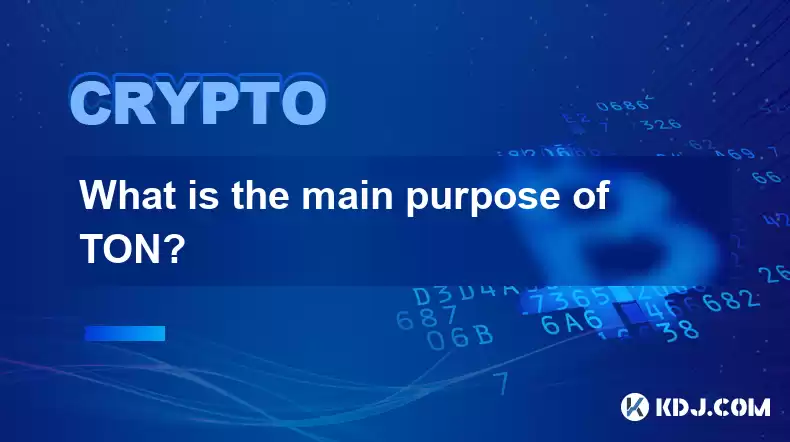
Key Points:
TON's primary purpose is to create a fast, scalable, and secure blockchain network capable of handling billions of users and transactions per second.
It aims to achieve this through a unique architecture combining sharding and a proof-of-stake consensus mechanism.
Beyond transaction processing, TON aims to facilitate decentralized applications (dApps) and a vibrant ecosystem of services.
The project emphasizes user-friendliness and aims to bridge the gap between traditional finance and decentralized technologies.
Security and privacy are central tenets of TON's design, leveraging advanced cryptographic techniques.
What is the main purpose of TON?
The Telegram Open Network (TON) is a blockchain platform with a multifaceted purpose. At its core, TON aims to build a highly scalable and efficient blockchain network that can support a massive number of users and transactions. Unlike many blockchains that struggle with scalability limitations, TON is designed from the ground up to handle billions of transactions per second. This ambitious goal is pursued through a sophisticated architecture.
TON's architecture utilizes a novel approach to sharding, dividing the network into smaller, more manageable fragments. This allows for parallel processing of transactions, significantly increasing throughput. This is coupled with a robust proof-of-stake (PoS) consensus mechanism, which aims to secure the network while minimizing energy consumption compared to proof-of-work systems. The combination of these technologies is central to TON's scalability ambitions.
Beyond its focus on scalability, TON aims to provide a platform for a wide array of decentralized applications (dApps). The project envisions a vibrant ecosystem where developers can build and deploy various services, ranging from payment systems and decentralized exchanges to social media platforms and gaming applications. The ease of development and deployment is a crucial aspect of TON's strategy to attract a large developer community.
A key aspect of TON's design philosophy is user-friendliness. Recognizing the challenges many users face with existing cryptocurrencies, TON strives to create a more accessible and intuitive experience. This involves simplifying the interaction with the blockchain, making it easier for individuals to participate and utilize the network's services. This approach is designed to appeal to a broader audience, bridging the gap between the crypto world and mainstream users.
Security and privacy are paramount in TON's design. The network employs advanced cryptographic techniques to protect user data and transactions. The focus on security extends to the network's architecture, aiming to create a resilient and resistant system capable of withstanding various attacks. This emphasis on robust security is crucial for building trust and fostering widespread adoption.
TON's Ecosystem and Functionality:
TON isn't just about transactions; it's about creating a complete ecosystem. This involves developing various tools and services to support the growth of the network and its applications. For example, TON provides a flexible framework for creating smart contracts, allowing developers to build sophisticated decentralized applications with various functionalities.
Furthermore, TON aims to facilitate seamless interaction between different blockchains. Interoperability is a key goal, enabling the exchange of value and data between TON and other networks. This interconnectedness is crucial for creating a more cohesive and robust decentralized ecosystem. The goal is to avoid the siloed nature of many existing blockchain networks.
The TON ecosystem also includes various tools for developers, such as SDKs (Software Development Kits) and documentation. These resources are intended to simplify the process of building and deploying applications on the TON blockchain, fostering a more active and engaged developer community. This is critical for the long-term success and sustainability of the network.
The project also incorporates mechanisms for governance, allowing the community to participate in shaping the future direction of TON. This decentralized governance model is intended to ensure transparency and accountability, empowering users to influence the network's development. Community involvement is seen as a crucial component of TON's long-term success.
Addressing Scalability Challenges:
One of the biggest challenges facing blockchain technology is scalability. Many existing blockchains struggle to handle a large volume of transactions, resulting in slow processing times and high transaction fees. TON directly addresses this challenge through its innovative architecture.
The sharding mechanism allows TON to distribute the processing load across multiple nodes, preventing bottlenecks and enabling high throughput. This contrasts with many other blockchains that rely on a single chain for all transactions. This difference is fundamental to TON's scalability advantage.
The proof-of-stake consensus mechanism also contributes to scalability. Unlike proof-of-work, which requires significant energy consumption, PoS is considerably more energy-efficient. This not only reduces environmental impact but also allows for faster transaction processing. This efficiency is a critical element of TON's scalability strategy.
Frequently Asked Questions:
Q: What makes TON different from other blockchains?
A: TON differentiates itself through its focus on extreme scalability, achieved through sharding and a PoS consensus mechanism, combined with an emphasis on user-friendliness and a robust ecosystem designed for dApp development.
Q: Is TON secure?
A: TON utilizes advanced cryptographic techniques and a robust network architecture designed to enhance security and protect user data and transactions. However, no system is completely impervious to attack.
Q: What are the potential use cases for TON?
A: TON's potential use cases are diverse, encompassing payment systems, decentralized exchanges, social media platforms, gaming applications, supply chain management, and more, essentially any application that benefits from a secure, scalable, and decentralized infrastructure.
Q: How can I participate in TON?
A: Participation in TON involves using its native cryptocurrency, TON Crystal (TON), for transactions and interacting with dApps built on the platform. The specifics of participation depend on the services and applications one wishes to use.
Q: What is the future outlook for TON?
A: The future outlook for TON depends on various factors, including adoption rates, developer community growth, and the overall evolution of the cryptocurrency landscape. Its success will hinge on its ability to deliver on its ambitious goals of scalability, usability, and a vibrant ecosystem.
Disclaimer:info@kdj.com
The information provided is not trading advice. kdj.com does not assume any responsibility for any investments made based on the information provided in this article. Cryptocurrencies are highly volatile and it is highly recommended that you invest with caution after thorough research!
If you believe that the content used on this website infringes your copyright, please contact us immediately (info@kdj.com) and we will delete it promptly.
- Unich's OTC Exchange: Surging with $1.2B Volume – What's the Hype?
- 2025-08-13 02:50:11
- MoonBull's Explosive Moves: Your Crypto Whitelist Ticket to Ride!
- 2025-08-13 02:30:11
- MAGACOIN Finance: Don't Miss the Presale Bonus!
- 2025-08-13 02:30:11
- Trump's Crypto Kingdom: $2.4 Billion and Counting
- 2025-08-13 02:50:11
- Solana, LSTs, and SEC Approval: A New Dawn for Crypto?
- 2025-08-13 02:55:12
- Bitcoin's Profit Surge: Unpacking the BTC Value Boom
- 2025-08-13 02:55:12
Related knowledge

How to purchase Aragon (ANT)?
Aug 09,2025 at 11:56pm
Understanding Aragon (ANT) and Its PurposeAragon (ANT) is a decentralized governance token that powers the Aragon Network, a platform built on the Eth...

Where to trade Band Protocol (BAND)?
Aug 10,2025 at 11:36pm
Understanding the Role of Private Keys in Cryptocurrency WalletsIn the world of cryptocurrency, a private key is one of the most critical components o...

What is the most secure way to buy Ocean Protocol (OCEAN)?
Aug 10,2025 at 01:01pm
Understanding Ocean Protocol (OCEAN) and Its EcosystemOcean Protocol (OCEAN) is a decentralized data exchange platform built on blockchain technology,...
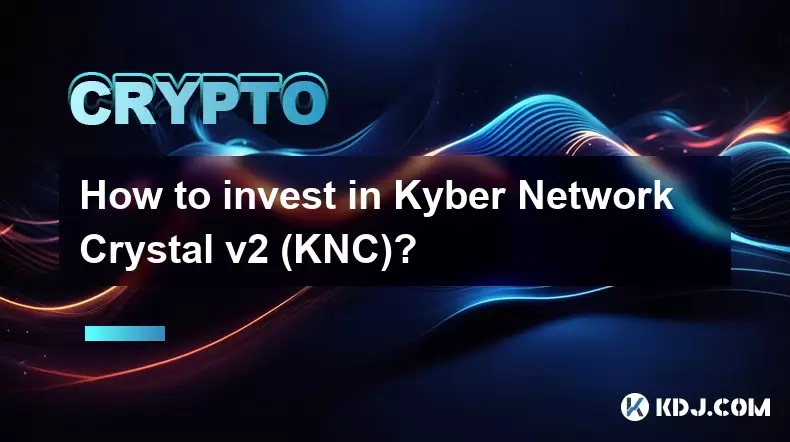
How to invest in Kyber Network Crystal v2 (KNC)?
Aug 12,2025 at 05:21pm
Understanding Kyber Network Crystal v2 (KNC)Kyber Network is a decentralized liquidity hub built on the Ethereum blockchain that enables instant token...

Where can I buy UMA (UMA)?
Aug 07,2025 at 06:42pm
Understanding UMA and Its Role in Decentralized FinanceUMA (Universal Market Access) is an Ethereum-based decentralized finance (DeFi) protocol design...
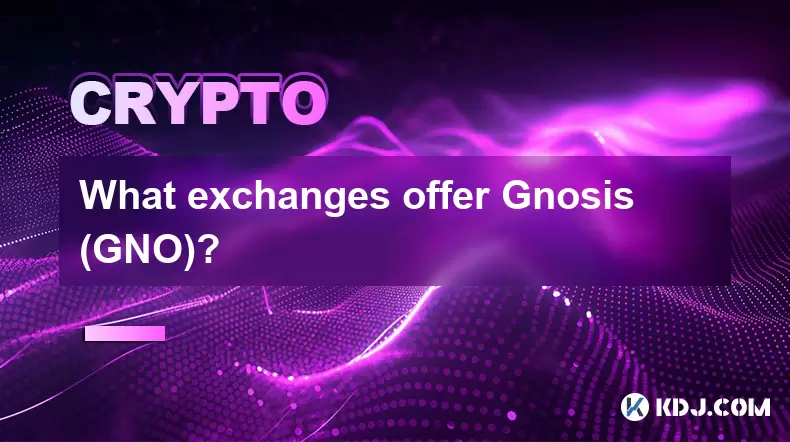
What exchanges offer Gnosis (GNO)?
Aug 12,2025 at 12:42pm
Overview of Gnosis (GNO) and Its Role in the Crypto EcosystemGnosis (GNO) is a decentralized prediction market platform built on the Ethereum blockcha...

How to purchase Aragon (ANT)?
Aug 09,2025 at 11:56pm
Understanding Aragon (ANT) and Its PurposeAragon (ANT) is a decentralized governance token that powers the Aragon Network, a platform built on the Eth...

Where to trade Band Protocol (BAND)?
Aug 10,2025 at 11:36pm
Understanding the Role of Private Keys in Cryptocurrency WalletsIn the world of cryptocurrency, a private key is one of the most critical components o...

What is the most secure way to buy Ocean Protocol (OCEAN)?
Aug 10,2025 at 01:01pm
Understanding Ocean Protocol (OCEAN) and Its EcosystemOcean Protocol (OCEAN) is a decentralized data exchange platform built on blockchain technology,...

How to invest in Kyber Network Crystal v2 (KNC)?
Aug 12,2025 at 05:21pm
Understanding Kyber Network Crystal v2 (KNC)Kyber Network is a decentralized liquidity hub built on the Ethereum blockchain that enables instant token...

Where can I buy UMA (UMA)?
Aug 07,2025 at 06:42pm
Understanding UMA and Its Role in Decentralized FinanceUMA (Universal Market Access) is an Ethereum-based decentralized finance (DeFi) protocol design...

What exchanges offer Gnosis (GNO)?
Aug 12,2025 at 12:42pm
Overview of Gnosis (GNO) and Its Role in the Crypto EcosystemGnosis (GNO) is a decentralized prediction market platform built on the Ethereum blockcha...
See all articles























